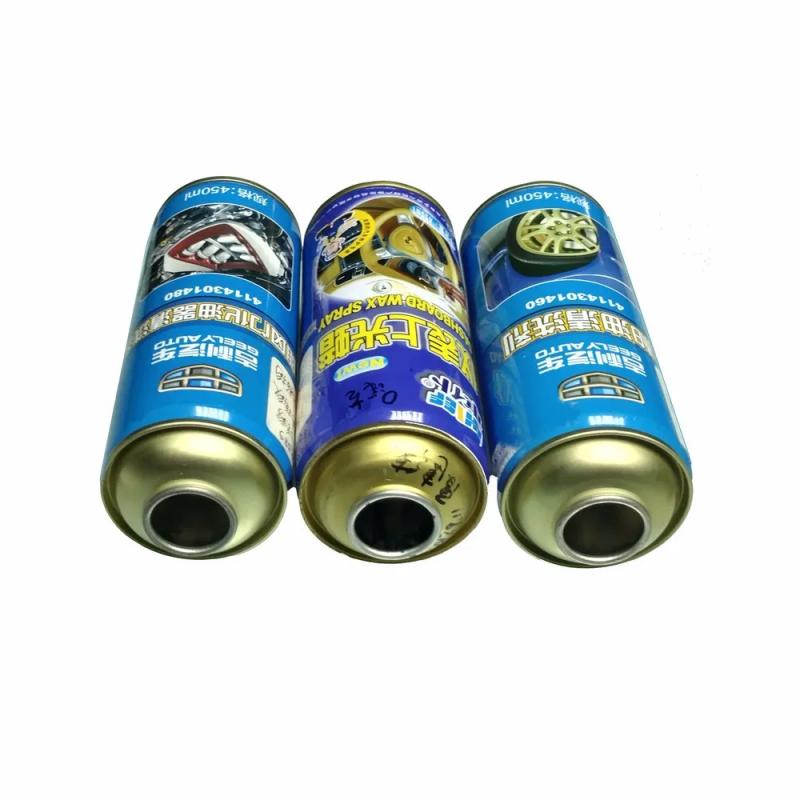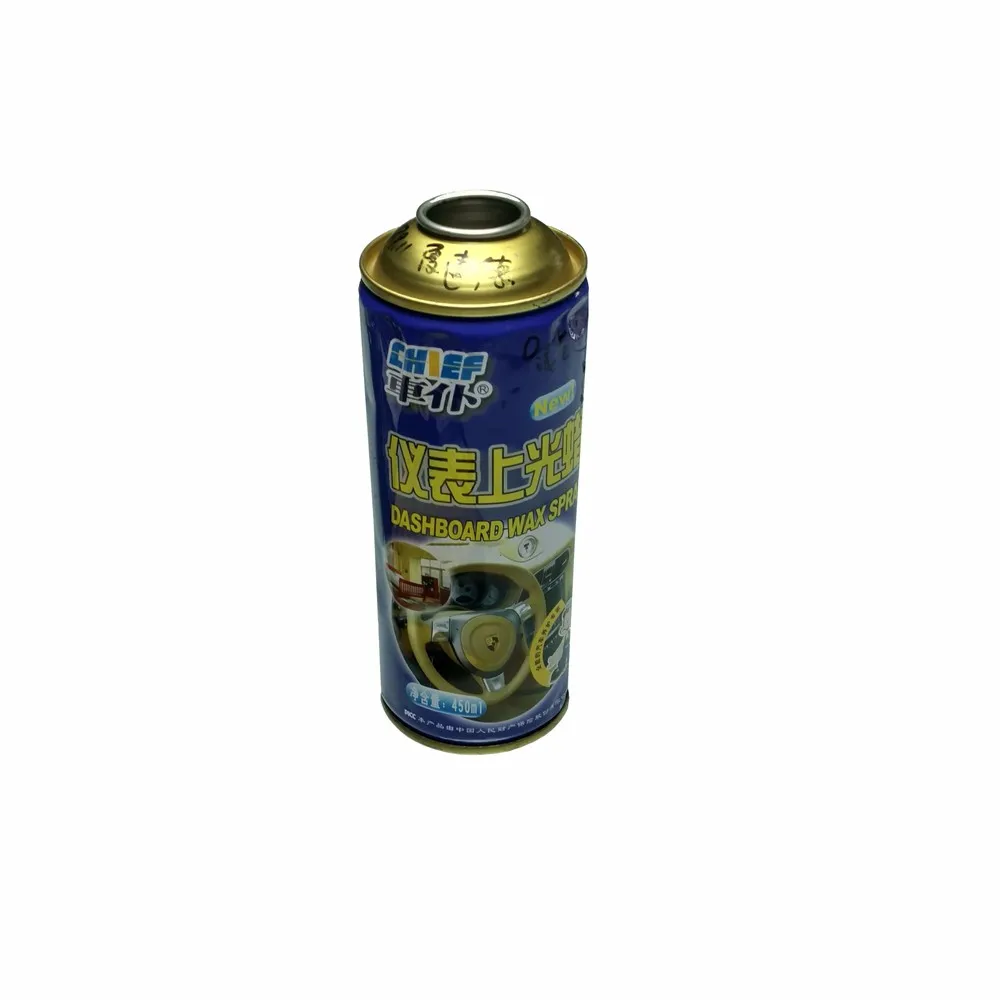In modern industrial production, paint aerosol cans are widely used in the coating and spraying industries. As an efficient and convenient painting tool, paint aerosol cans can not only improve construction efficiency, but also ensure the uniformity and quality of the coating. However, many manufacturers and consumers may overlook a key factor: the size of paint aerosol cans. The size of paint aerosol cans has an important impact on its use effect, storage, transportation, etc.
So, what is the ideal size of paint aerosol canisters? This news will explore this issue in detail, analyze the factors that affect the size selection of paint aerosol cans, and how to choose the most suitable size according to different needs.

Basic structure and function of paint aerosol cans
What is the structure of paint aerosol cans?
Paint aerosol cans are usually composed of a can body, a nozzle, a gas propellant and a paint liquid. The can body is generally made of metal materials, such as tinplate or aluminum alloy, which have good corrosion resistance and strength and can withstand high pressure. The gas propellant is usually a compressed gas (such as carbon dioxide or propane), which can push the paint liquid out through the nozzle to form a uniform atomization effect.
The design of paint aerosol canisters must not only meet functional requirements, but also consider ease of use and safety. The nozzle design of aerosol canisters is crucial, which determines the uniformity and spraying range of the spraying effect. The size of the can directly affects the capacity, weight and durability of the aerosol canisters.
What is the function of paint aerosol cans?
Paint aerosol cans can evenly atomize and spray the paint onto the target surface during the spraying process by mixing paint and gas propellant. The spraying effect of aerosol cans depends not only on the type of paint, but also on the propulsion pressure of the gas, the design of the nozzle and the size of the aerosol cans. Paint aerosol cans are often used in a wide range of coating applications, such as furniture, metal, automobiles, building exteriors, etc., to achieve a uniform and delicate coating effect.

Selection of paint aerosol cans size
How does the capacity of paint aerosol cans affect their use?
The capacity of paint aerosol cans is an important factor to consider when choosing their size. Generally speaking, the larger the capacity of paint aerosol cans, the more paint can be stored and the longer the spraying time. However, aerosol cans with too large capacity may be bulky during use, especially for spraying operations with small-scale and delicate operations. Too large cans may cause uneven spraying or inconvenient operation.
Advantages of large-capacity aerosol canisters
● Long-term spraying: Large-capacity paint aerosol cans are suitable for large-area painting work, such as building exterior wall painting or car painting, and can work continuously for a long time, reducing the trouble of changing cans in the middle.
● Suitable for high-demand operations: For large-volume spraying tasks in commercial or industrial production, large-capacity paint aerosol cans can meet the needs of high efficiency and high quality.
Disadvantages of large-capacity aerosol cans
● Not suitable for fine spraying: Large-capacity paint aerosol cans are usually heavy and difficult to control. For delicate spraying operations, such as spraying furniture, models, etc., it may cause paint waste and uneven coating.
● Storage and transportation issues: Large-capacity aerosol cans require more space during storage and transportation, and there may be a risk of leakage or explosion due to excessive pressure during storage.
Advantages of small-capacity aerosol cans
● Easier to control: Small-capacity paint aerosol cans are usually lighter, and can more accurately control the range and amount of spraying when used, which is suitable for fine work.
● Suitable for small-scale painting: For spraying of small-scale furniture, tools, models, etc., small-capacity aerosol cans are more flexible and efficient.
Disadvantages of small-capacity aerosol cans
● Shorter spraying time: Small-capacity aerosol cans have less paint and need to be frequently replaced or refilled with paint, which is suitable for short-term and small-scale operations.
● May increase the frequency of operation: Due to the small capacity, it may be necessary to change the paint or prepare for spraying more frequently, increasing the frequency and complexity of the operation.
How to determine the ideal size of paint aerosol canisters?
The ideal size of paint aerosol canisters depends on many factors, including usage scenarios, spraying requirements, spraying accuracy, etc. In order to better choose the size of paint aerosol cans, you can decide based on the following key factors:
● Type and scale of spraying operations: If it is a large-area spraying job, such as architectural painting or automotive painting, you can choose a large-capacity paint aerosol can; for small furniture, decoration or handicraft spraying, you can choose a small-capacity aerosol can.
● Spraying accuracy requirements: If high-precision spraying effects are required, such as detail spraying, edge coating, etc., smaller paint aerosol cans may be more suitable because they are lighter and easier to control.
● Frequency of use: For frequently used spraying jobs, choosing medium-capacity aerosol canisters may be more efficient and avoid frequent replacement or refilling of paint.
● Convenience of carrying and storage: In situations where frequent movement or convenient storage is required, choosing small-capacity aerosol canisters that are lightweight and easy to carry will be an ideal choice.

How does spraying efficiency and paint coverage relate to the size of aerosol cans?
How does the size of aerosol cans affect the spraying effect?
The size of the paint aerosol can directly affects the spraying effect. Larger aerosol canisters generally produce a larger spray range and can quickly cover a large area. Smaller aerosol cans can provide a finer spray effect, which is suitable for complex details or small areas of painting. Choosing the right size of paint aerosol cans can help achieve higher spraying efficiency while avoiding paint waste.
How to choose the right spraying range and spray accuracy?
● Large-scale spraying: For jobs that need to cover a wide area, such as walls, roofs, etc., it is more appropriate to choose large-capacity paint aerosol canisters. Large-capacity tanks can maintain spraying for longer periods of time without the need to frequently change paint or adjust spray settings.
● Fine spraying: For spraying tasks that require precise coatings, such as furniture, models, and decorations, choosing small-capacity paint aerosol canisters can more accurately control the spraying of paint and avoid uneven coverage or wasted paint.
The relationship between aerosol canisters pressure and spraying effect
The size of aerosol canisters also affects the size of internal pressure. Larger paint aerosol cans usually require higher pressure to push more paint and are suitable for large-scale spraying; while smaller aerosol canisters have lower pressure and can perform more delicate spraying work. Understanding the relationship between pressure and size of paint aerosol cans is crucial to optimizing spraying effects.
How to choose the ideal size of paint aerosol cans?
Choose size according to actual application needs
For industrial and home users, choosing the ideal paint aerosol can size needs to be balanced according to actual needs. If the workload is large and the spraying speed is required to be high, large-capacity aerosol canisters should be selected; if there are high requirements for spraying accuracy, small-capacity aerosol canisters are more suitable. By comprehensively considering factors such as the scale of painting, the accuracy of the operation, the type of paint, and the operation time, the appropriate size of paint aerosol cans can be selected to achieve the best spraying effect.
Consider the economics of paint aerosol cans
In addition, economics also need to be considered. Larger-capacity paint aerosol canisters may be more cost-effective in long-term use because they can reduce the frequency of replacement, thereby reducing consumable costs. Although small-capacity aerosol canisters may require more frequent additions of paint, they can avoid paint waste and improve material efficiency in some delicate operations.

